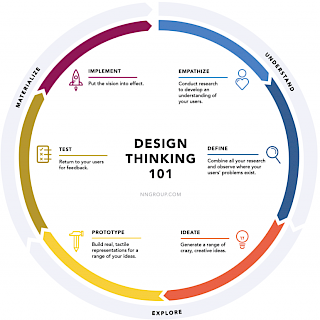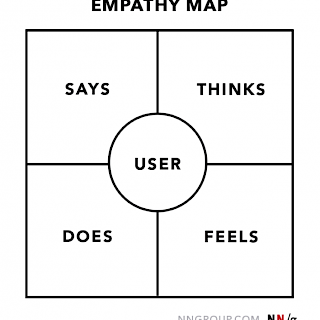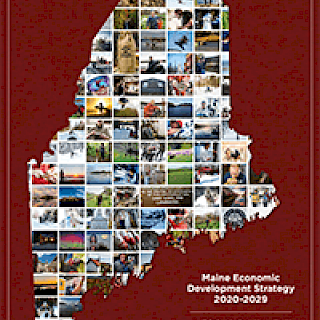A "pitch deck" is a term used to describe a powerpoint or slide presentation used in a pitch meeting. Innovators and entrepreneurs want to convince their audience to buy or support their idea, and try to do so by demonstrating the people's needs, the weaknesses of existing alternatives, and the strengths of the proposed solutions. An important element of the pitch deck is the "magic slide," a term to describe the moment when your audience gets to experience your solution. How will you create your "magic slide" or "magic moment" for your audience?
May 30, 2020 •A State Agenda for America's Workers provides a comprehensive overview of state level policy options that can be implemented with aim of attracting a strong worker population. This document contains strategies that can lay a foundation for efficient and effective employmer-employee relationships that then could attract a hardworking workforce. Topics covered include affordable housing, shared prosperity, paid sick and family leave, and minimum wage increases.
May 27, 2020 •How to Feed the World in 2050 is a comprehensive report by the Food and Agriculture Orgaization of the United Nations. The report discusses potential food needs in relation to impacts of population growth and climate change, total investment and policy requirements, technologies role in production, and plant and animal adaptability.
May 27, 2020 •The Natural Resource Council of Maine (NRCM) plays a key role in statewide natural resource management. NRCM's website provides an array of resources regarding the role of Maine's natural resources in renewable energy generation. Considering natural resource use thus management in renewable energy generation is fundamental to good energy planning.
May 27, 2020 •Maine Renewable Energy Association (MREA) is a not-for-profit association of renewable energy producers, suppliers of goods and services to those producers, and other supporters of this industry. MREA's member site shows the diversity of stakeholders involved with the renewable energy industry in Maine. MREA leads the local and statewide policy debate on renewable energy generation in Maine, and works to ensure its efforts are united with those of its member companies.
May 27, 2020 •The U.S Energy Information Administration (EIA) website provides a great overview of energy-related information for Maine, including energy indicators, prices, reserves, energy supply and distribution, consumption and expenditures, and the environment (renewable energy facts). The EIA's profile analysis for Maine provides valuable background information on electricity, petroleum, natural gas, coal, and renewables sources.
May 27, 2020 •With states experiencing similar problems, such as growing and retaining local labor, referencing other state's strategies can provide valuable insights that can be considered and applied in other places, such as small towns, whole regions, or even statewide. The South Carolina workforce presentation provides a concise list of strategies recently implemented to achieve the state's local talent development goals. Reviewing this resource will provide a strong foundation to create a local workforce development strategy for Maine.
May 27, 2020 •The Federal Communications Commission Strategic Plan 2018-2022 provides an overview of the policy environment surrounding broadband (high-speed internet) managment in the United States. Topics discussed include closing the digital divide, promoting innovation, protecting consumers and public safety, among others. This strategic plan highlights key stakeholders, their goals, and the many factors to consider when analyzing the broadband connectivity problem many face. Solutions and performance measures are discussed. Visit https://www.fcc.gov/ for more information.
May 26, 2020 •This whitepaper provides a foundation of information surrounding contemporary broadband development in Maine. The document provides some historical background, hardware descriptions and considerations, and geographic and landscape features influencing broadband development in Maine, as well as and overview of key stakeholders and decisionmakers guiding progress.
May 26, 2020 •Bridging the Digital Divide is a student blog that offers facts and realities to consider when analyzing the digital divide problem. The blog discusses Philidelphia, Pennsylvania, an urban community working to close the digital divide by working with both private and public stakeholders, and government nongovernmental entities. This brief writeup describes the digital divide beyond access to literacy. This document is a good starting point to inform solution development.
May 26, 2020 •This resource provides a template with which to write an executive summary for your product and plan for development. The executive summary acts as a high-level or general overview of your product and writing the summary allows you to organize your thoughts in a coherent manner. Often, it makes sense to write an executive summary after you have performed your research and developed your solution, but before you create your presentation or prototype.
May 26, 2020 •
With climate changing forcing the hand of the world’s top innovators, what poses to be the most promising renewable energy to supply the bulk of the US grid? This video provides an overview of the different strategies regarding renewable energy resources and carries implications for Maine.
May 26, 2020 •
Contestants at the World Entrepreneur of the Year contest in Monaco tell Emma Boyde how they have grown their businesses by solving the need to increase production, provide protein, or simply ship berries to feed rich and poor around the world
May 26, 2020 •Consumers are clamoring for food choices that are healthy, environmentally friendly and sensitive to animal welfare. Investors are responding to this new demand by finding opportunities in alternative proteins. This panel will explore: What are the challenges posed by traditional protein sources and their supply chains? What benefits do alternative proteins provide to the consumer, the environment and public health? How are companies using technology to disrupt traditional protein sources? How do plant-based proteins and cultivated proteins differ? What are some of the most promising technologies? What investment opportunities do protein alternatives present? How strong is global demand and how can producers meet the expected increases?
May 26, 2020 •On NewsCenter Maine, Yellow Breen looks at what Maine needs to do to continue to grow the economy, including growing local talent and attracting new talent to the state.
May 26, 2020 •New Frontiers in Reskilling and Upskilling provides an overview of strategies when developing solution proposals, from applying a systems perspective, encouraging and enabling personal agency, organically and virtually training soft skills, to overlapping experienced with the less experienced. This article provides a strong foundation to further research this challenge topic.
May 26, 2020 •
A useful webpage that explains the design-thinking process upon which the conference and its components have been based. Reviewing this information helps participants better understand the organization of the conference, it's learning objectives, and how to make the most of the opportunities it presents.
May 26, 2020 •How to Attract Talent to a B-Town is a short article outlining strategies to attract talent to less than urban areas. With continuous effort by top employers located in what are considered by many to be desirable locations, this article jumpstarts the conversation of the conventional and unconventional approaches applied by some rurally located companies to outcompete other employers with amenities that satisfy many lifestyles.
May 26, 2020 •
The first step in design-thinking. An empathy map is a visualization framework used to articulate what we know--and don't know--about the person or people we want to help. The map helps teams create a shared understanding of the needs, and aid in decision making.
May 26, 2020 •This framework helps students develop their presentation for the Conference Pitch Challenge through the acronym "NASA". Follow the directions to define the specific need (N) you want to solve, the weaknesses of existing alternatives (A), your solution (S) and its features, and your solutions advantages (A) over the competition. Use these ideas to write your 60-second pitch using the template at the bottom of the form!
May 25, 2020 •This rubric acts as a scorecard, for teams that opt into the Prototype Challenge. The scorecard helps them understand the basis upon which their innovation is considered and thus the standards to achieve.
May 25, 2020 •Broadband speeds, wired coverage, and broadband coverage vary from location to location in Maine. For example, broadband coverage can range from 73.1% in Holden to 100% in a number of cities, including Portland, which has the highest average download speed at 41.86 MBPS. With 82 providers in Maine yet 47,000 Mainers do not have access to the high-speed internet.
May 15, 2020 •
This is a 10-year Economic Development Strategy for Maine and its vision serves as the focus of the 2020 MLTI Innovation Challenge. It is a dynamic and nonpartisan roadmap designed to foster collaboration among the public, private, nonprofit and education sectors for the purpose of creating a diverse and sustainable economy.
May 15, 2020 •On December 12, 2019, News Center Maine covered Governor Mills's announcement of the plan and interviewed key stakeholders, including Heather Johnson from the Department of Economic & Community Development and Kim Hamilton from Focus Maine, to talk about the opportunities and challenges facing Maine's economic development.
May 15, 2020 •Focus Maine is a 10-year, private sector-led initiative to accelerate the creation of quality jobs in Maine by investing in three of Maine’s most globally competitive and high-growth fields: agriculture, aquaculture, and biopharmaceuticals. It focuses on traded jobs, which are created by selling Maine’s goods and services outside of the state and which have a job multiplier effect in the local economy.
May 15, 2020 •
Attracting talent to Maine involves attracting members of immigrant communities. Maine offers a wealth of opportunity for immigrants, including one of the most hospitable locations to live in America, yet immigrants make up only 3 of Maine's total population. How can Maine attract more immigrants to help bolster its talent base?
May 15, 2020 •